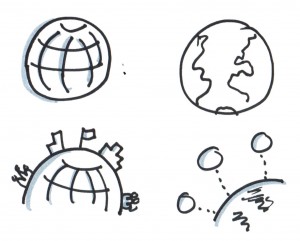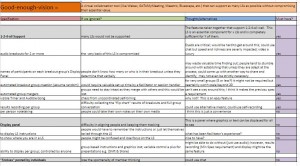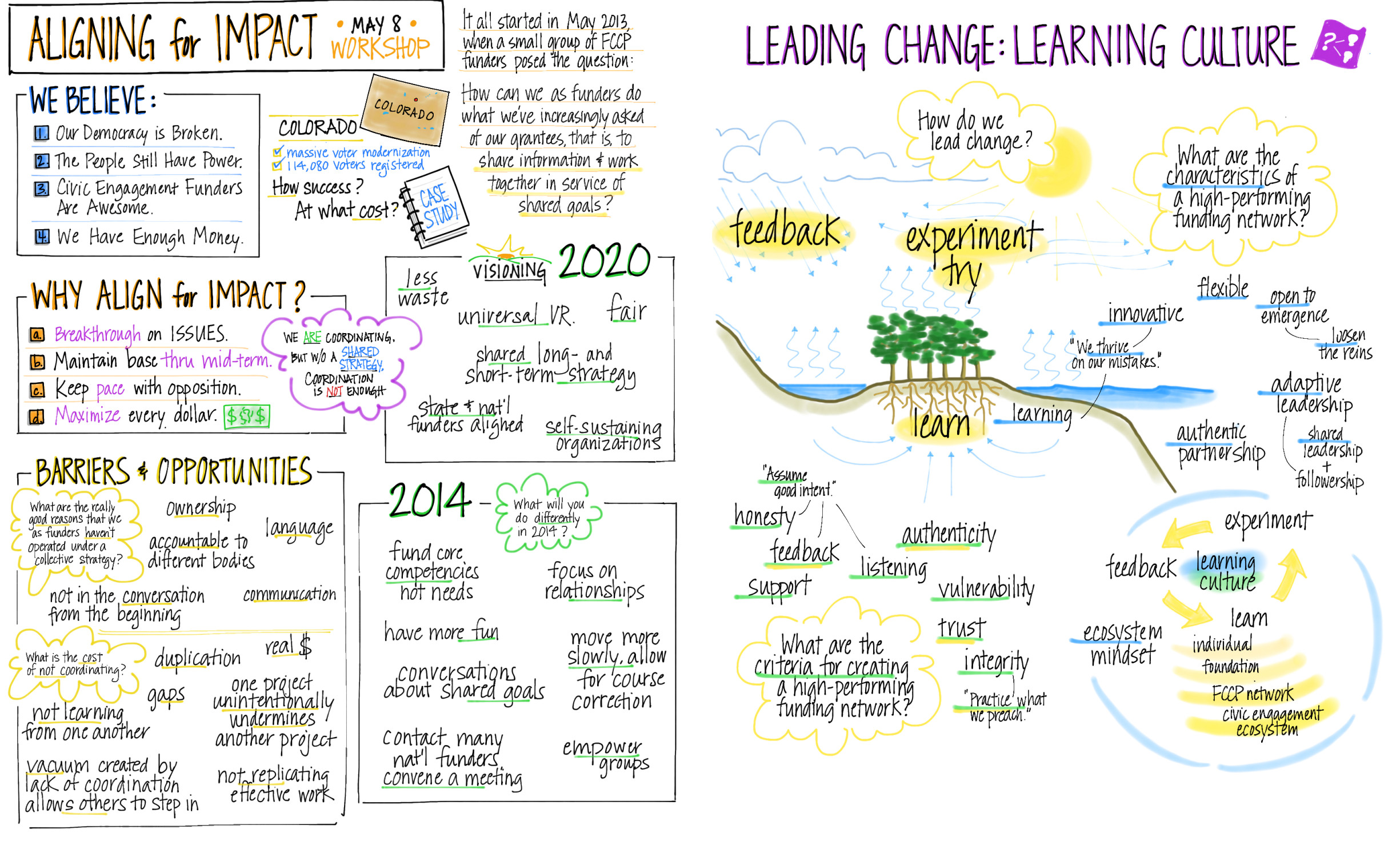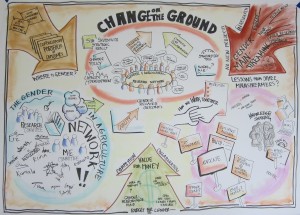 Let me confess right up front: I really don’t like webinars. Too often they feel “done unto me.” I am powerless, at the mercy of the organizers. I may have access to a chat room (Thank Goodness!) But more often than not, these are content delivery mechanisms with token participant interaction in the form of crowded Q&A segments or polls with varying degrees of relevance. What is worse is that I have been a perpetrator of these practices so I continue to try and change my evil ways.
Let me confess right up front: I really don’t like webinars. Too often they feel “done unto me.” I am powerless, at the mercy of the organizers. I may have access to a chat room (Thank Goodness!) But more often than not, these are content delivery mechanisms with token participant interaction in the form of crowded Q&A segments or polls with varying degrees of relevance. What is worse is that I have been a perpetrator of these practices so I continue to try and change my evil ways.
Changing ingrained habits requires some reflection – of self and of the state of the practice of these so-called “webinars.” Recently I had the chance to offer feedback on a webinar I experienced as a recording. I’ve edited/generalized my thoughts to share. In a follow up post I’ll reflect on my own practice — this is where I need to cut to the bone!
1. Us/Them: It is logical for an organizer or organizing agency to want to appear well prepared for sharing their work. We all like folks to know we “did our homework.” We get our slides spiffed up and appropriately formatted for the webinar tool we are given. We time our remarks. We practice speaking clearly and at an appropriate pace.
The challenge this presents is that the end product puts the speaker and/or the organization at the center. We create an us/them dynamic before the event even starts. Think about set ups where the only ones who can use the voice tool to communicate are the organizers. Those who bear the presentation file are in control of the message. The tool administrator(s) control the process (i.e determining that they speak for 60 minutes, then there is Q&A.)
The use of a one way style of presentation reinforces the power dynamics of the speaker/expert/organization as central, and everyone else as “audience.” All too often, the audience is never heard. Is that a good use of precious synchronous time? Why not send out a video or narrated PowerPoint? An online gathering is time better spent as a multi-directional mode of “being together” — even online. This does NOT diminish the importance and value of content we “deliver” to others. Here are some options to consider.
Options:
- Move away from meetings that are primarily broadcast which holds control with the presenter. Sharing information is essential, but synchronous time should always have significant multi directional interaction. For my colleagues in international development, I think everyone has values of inclusiveness and shared participation. We have to “walk this talk” in webinars as well.
- Small things can create or break down us/them. For example don’t just show where you are on a map at the start of a webinar, add dots for all the participants and their locations. Better yet, use a tool that allows them to add their own dots. Help the group see not only you, but “we” – all the people working together about something we all care deeply about.
- Because we lack body language online, it is useful to really scrutinize our language.From the wording in the slides and by the speaker, consider changes in language so that it is more inclusive of the participants.
2. Strive for good practices for learning/engaging online. Webinars in general run the risk of being even less engaging than a dark room face to face with a long PowerPoint. There is a saying in the online facilitation world “A bad meeting F2F is a terrible meeting online.” So we need to be even more attentive to how we structure online engagements to reflect a) how adults learn b) the high risk of losing attention (especially due to multi tasking) and c) the cultural and power diversity inherent in your group. Quality content is important, but it alone is not a reason to use an interactive platform — you can deliver content in many ways. Choosing a synchronous mode, to me, implies interaction.
Options:
- Consider keeping online meetings to 60 minutes. If not, do a stretch break every at 30 and 60 minutes. Say “let’s take a 60 second break.” Stand up, stretch, look away from the screen and give your body a moment of respite. We’ll call you back in 60 (90-120) seconds (sometimes a bio break is useful!)
- A useful rule of thumb is to break up information presentation with some means of audience engagement/participation every 7-15 minutes. Use polls, chat, “red/green/yellow” feedback mechanisms, hand raising, checking for understanding, etc. This may mean you have someone facilitating these other channels if it is too distracting for the host and speakers. (Over time it does get easier, but practice is critical!)
- Take questions approximately every 15 minutes vs holding at end. People stop listening carefully and are thus less prepared to ask questions after longer periods of time. (They are also more prone to multitasking, etc.)
- Don’t just deliver information – use narrative. Stories hold our attention better than a series of bullet points. In fact, ditch those boring slides unless you are using the printed information to make it easier for people coming from a different first language.
- Deliver the useful content in a different manner and use the webmeeting entirely for questions and interactions. Send a recording introducing the team. Send a narrated PowerPoint about the topic. Keep these content packages smaller. For example, if you were trying to give an overview of a portfolio of projects, you could break it up into some sub packages. 1) about the team 2) strategy, 3) project descriptions, 4) monitoring and evaluation strategy, etc.
- Secondary tip: Do not think of these information products as polished products — don’t waste energy overproducing. That sucks the human element out of it. Imperfection is a door to engagement… seriously. Moments of uncertainty, tough questions — these engage the participants.
- Stay relaxed as a narrator and speak at useful pace for understanding, particularly for those who have English as a second (or third, fourth) language. Keep that human touch. Add little bits of personal information and affect. Be human.
- Let participants ask question verbally, not just in chat if possible. While there are many technical complications and sometimes the burden of accents on unclear audio channels, voice brings again brings in that human element. (Video does too, but there are bandwidth considerations. When you can, consider using it.)
- Encourage collective note taking in the chat room or with complementary tool. When people share this task, they listen more carefully and the begin to learn about each others strengths and insights as people add additional information or annotations.
- When someone asks a question, note who asked the question. This helps everyone see that people are heard, even if the audio option is not practical (for various reasons, no mic, etc. ) At the end of the call, specifically thank by name those who asked questions to encourage the behavior for future interactions.
- In Q&A sections, consider a visual to help people pay attention. Use the whiteboard for noting the questions, answers, links that refer to what has been spoken about, etc.
There are a few ideas. What are yours?
Also, here are some previous posts about similar issues:
- Quick Revisit of Web Meeting Tools – What is your favorite?
- What does it mean to facilitate an online meeting?
- Debrief: the role of visuals in online community management
- Synchronous Scheduling Trips in Larger Distributed Groups
- Telephone Conference Call Tips
- Designing and Facilitating Online Events (old, but still of some use…)
- What do we mean by engagement online?
- Raising the Bar on Online Event Practices
- Monday Video: Strange Meeting (and a few comments on teleconferencing)
- Why chat streams are critical to live events


 Playful Topics
Playful Topics Image courtesy of Steve Ruano, ©1999 (alas, gif is gone!)
Image courtesy of Steve Ruano, ©1999 (alas, gif is gone!)
